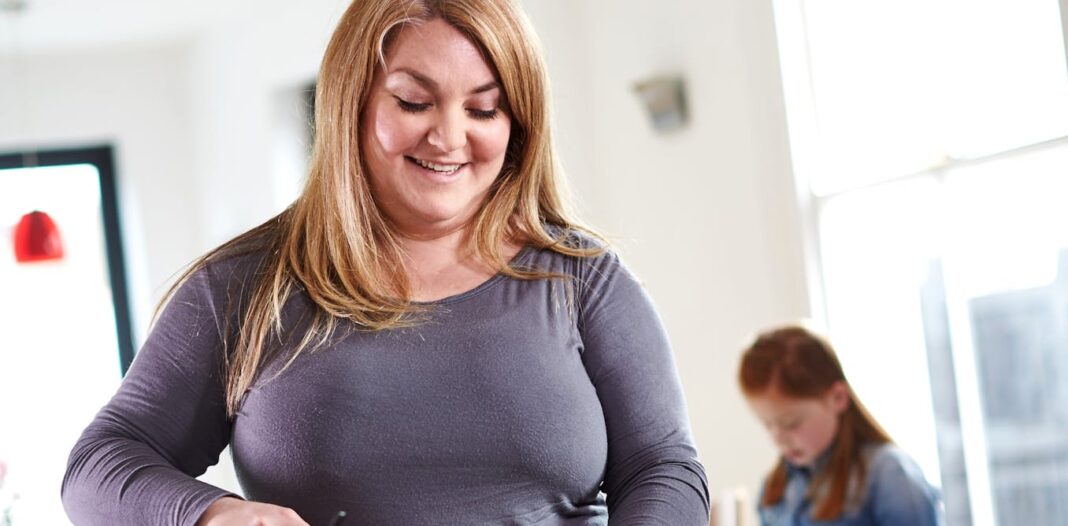Health at every size (or HAES) is a lifestyle counselling approach that promotes mindful eating and lifestyle behaviours to pursue health and wellness, without focusing on weight loss. Weight loss is seen as a beneficial side effectrather than a goal.
The Association for Size Diversity and Health first developed the approach in 2003 and revised it in 2013 and 2024. Its current core principles promote:
- minimising weight discrimination
- encouraging body acceptance
- intuitive eating
- enjoyable physical activities.
It also aims to address stigma and discrimination that people in larger bodies may experience when seeking medical care.
Internationally, a range of health professionals have incorporated the HAES approach into their treatment and services. Some organisations, such as Obesity Canadahave included HAES in their guidelines for obesity treatment.
How does it compare with weight-focused treatments?
We conducted a systematic review and meta-analysis of all the research studies published until November 2022 that had used HAES-based programs.
Across 19 scientific papers, we compared the outcomes of people living in larger bodies who used HAES-based programs with:
- conventional weight loss programs (six studies)
- people on waiting lists receiving no treatment at all (six studies)
- groups where people received weekly social support in groups (four studies).
We evaluated the program’s impact on appetite, weight, physical health measurements including cholesterol and blood pressure, and also wellbeing and mental health.
Halfpoint/Shutterstock
Our analysis found HAES interventions were beneficial in reducing susceptibility to hunger more than other approaches, meaning people had less subjective perceptions of hunger or eating in response to emotions.
However, compared to control interventions, HAES did not show superior results for improving any other physical health outcome – weight loss, blood cholesterol levels, blood pressure – or wellbeing or mental health outcomes.
Given the results to date, the choice about whether to use a HAES-based approach (or not) will depend on each person’s preference, needs and goals.
Don’t get your health advice from influencers
While HAES has been used in clinical practice for many years, some United States and Canadian anti-diet practitioner’s motives have been scrutinised because of their links with processed food companies.
The spotlight was put on the very small number of dietitian “influencers” (roughly 20 from a membership of more than 80,000 dietitians in the US and Canada) promoting “eat what you feel like” and discouraging people from making weight loss attempts, under the banner of HAES. They failed to mention they were being paid to promote products sold by food, beverage or supplement companies.
US author and dietitian Carrie Dennet urges people to not look to influencers for health advice. Instead, seek non-judgemental health care from your GP.
What might treatment look like?
When improving your health is a treatment goal, a good place to start your journey is to have a health check-up with your doctor, as well as to assess your relationship with food.
A healthy relationship with food means being able to eat appropriate amounts and variety of foods to meet your nutritional, health and wellbeing goals. This might include strategies such as:
- keeping a food mood diary
- reflecting on factors that influence your eating
- practising mindful eating
- learning about nutrient needs
- focusing on food enjoyment and the pleasure that comes from preparing, sharing and eating with others.
If you need more help to develop this, ask your doctor to refer you to a health practitioner who can assist.
What if your goal is weight loss?
When it comes to medical nutrition therapy to treat weight-related health conditions, such as high blood pressure and type 2 diabetes, the approach will depend on individual needs and expectations.
Broadly, there are three graded energy intake target levels:
-
a reduced-energy diet where the goal is to lower energy intake by 2,000 to 4,000 kilojoules (kJ) per day by identifying food substitutions, like swapping soft drinks and other sugar-sweetened drinks for zero or diet versions or water.
-
a low-energy diet, which uses an energy intake goal in the range of 4,200-5,000 kJ, up to 7,000 kJ per day depending on an individual’s energy expenditure.
-
the most restricted regime is a very low-energy diet, has an energy intake target less than 2,500 kJ/day, achieved using formulated meal replacement products.
The aim of a very low-energy diet is to facilitate rapid weight loss when this is essential to improve health acutely such as poorly controlled type 2 diabetes. Such a diet should be used under supervision by your doctor and dietitian.
When selecting an initial strategy, seek a balance between energy intake goals and your ability to stick to it. Your approach may change over time as your health needs change.
If you need personalised nutrition advice, ask for a referral to an accredited practising dietitian. The register of service providers though Dietitians Australia allows you to view their expertise and location.
Regardless of whether your practitioner uses a HAES approach or not, your health providers should always treat you with respect and address your personal health and wellbeing.




